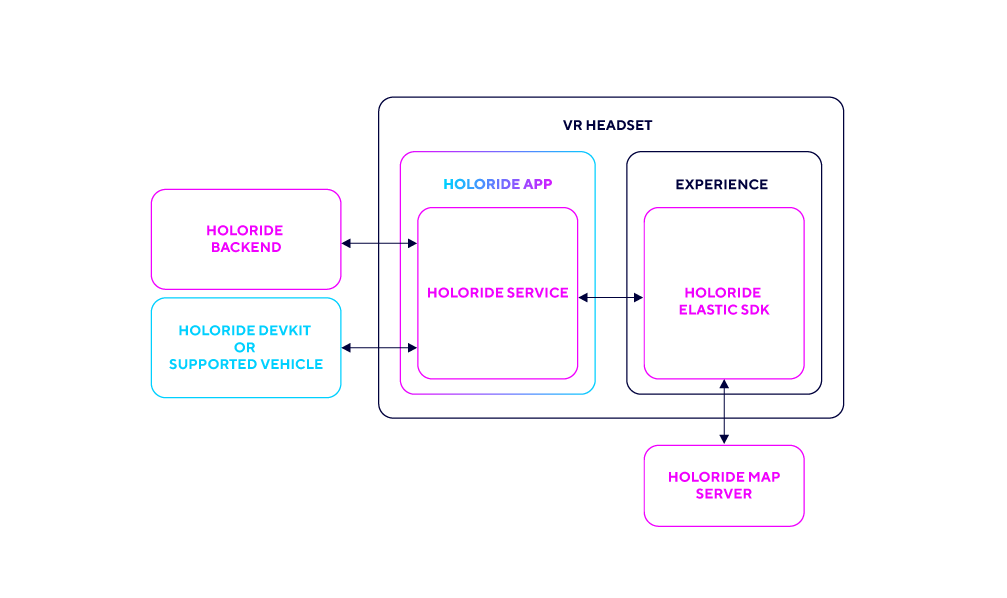System Information
Architecture
The holoride software stack is made up of different parts, which are visualized in the image below:

Knowing how the key components work together helps understand the system holistically.
holoride Backend
The holoride backend manages credentials of end users. A user must be logged into their active user account in the holoride app to be able to play holoride experiences. The connection to the holoride backend is established by the holoride app.
holoride App
The holoride app acts as a central hub to enter the holoride ecosystem. The user has to be logged into the active holoride account in the holoride app to use holoride-enabled experiences. The holoride app also bundles the holoride service.
holoride Service
The holoride service handles connections to the holoride DevKit as well as to supported vehicle brands. It connects to games/experiences running the holoride Elastic SDK and provides all the necessary data from the holoride DevKit / the vehicle.
Elastic SDK
The Elastic SDK receives data from the holoride service and is our engine for elastic content generation. Equipped with an easy-to-use node graph, it is a powerful toolset that enables content creators to procedurally generate experiences based on vehicle and map data. It connects to the holoride maps service that provides map information on the go.
holoride Map Server
Our holoride map server provides map information based on the Open Street Maps database. It provides tile-based information as well as Overpass/POI information to the holoride Elastic SDK. holoride DevKit / Supported Vehicle The holoride DevKit and supported vehicle brands provide all necessary information to ensure smooth reflection of the vehicle movement in the holoride Elastic SDK.